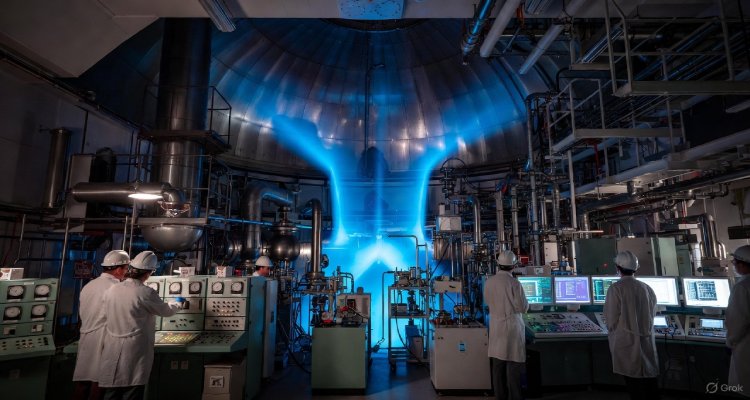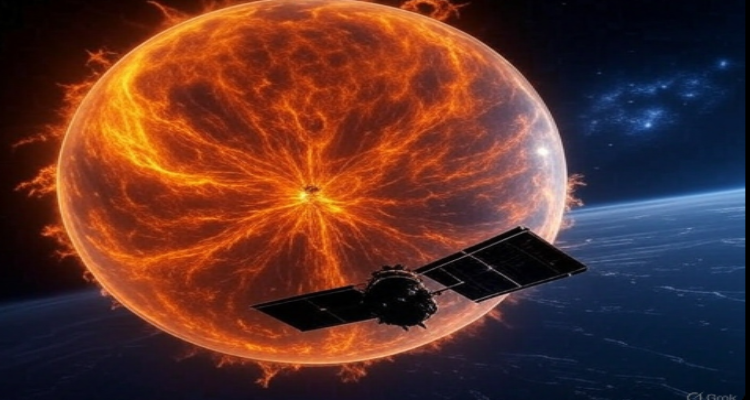Aditya-L1 Captures Rare Solar Flare Racing at Warp Speed
India’s Aditya-L1 captured a rare ultraviolet solar eruption, racing fast enough to circle Earth in 30 seconds.
Aditya-L1 Spots Ultra-Fast Solar Flare Racing Around Earth’s Orbit
In a stunning leap for solar science, India’s Aditya-L1 mission has delivered a first-of-its-kind glimpse into the Sun’s volatile personality. On December 31, 2023, while en route to its strategic post at the Lagrange Point 1 (L1), Aditya-L1 captured a dramatic solar flare and an accompanying blast of plasma—traveling at speeds fast enough to encircle the Earth in half a minute.
This rare and riveting footage wasn’t just another solar snapshot. It marked a scientific milestone: the first time a solar eruption was captured in the near-ultraviolet (NUV) spectrum using India’s Solar Ultraviolet Imaging Telescope (SUIT), a pioneering instrument aboard the Aditya-L1 spacecraft.
SUIT Telescope Captures Solar Eruption in New Light
The SUIT instrument recorded the explosive flare as it burst from the Sun’s surface, unleashing a bright blob of plasma. Initially, this incandescent mass was moving at about 300 kilometers per second. Within moments, it surged to a blistering speed of 1,500 kilometers per second—enough to circle Earth in just 30 seconds.
While solar flares and coronal mass ejections (CMEs) have been observed before, what sets this moment apart is the spectrum in which it was captured. NUV light reveals layers of solar activity not visible in traditional observations, offering unprecedented clarity on how these high-energy events unfold and propagate through space.
Why This Matters: Protecting Technology on Earth
Solar flares and CMEs aren’t just distant cosmic fireworks. They have real, tangible impacts on Earth. From disrupting satellite communications and navigation systems to triggering power grid failures, space weather can rattle modern infrastructure in ways most of us rarely think about.
According to the National Oceanic and Atmospheric Administration (NOAA), X-class flares—like the one captured by Aditya-L1—are the most powerful category and can cause “widespread radio blackouts.” Understanding the mechanics behind such eruptions is critical for developing early warning systems and protective measures for our increasingly space-reliant society.
A Collaboration of Global Eyes on the Sun
This event, observed from active region NOAA 13536, is already being integrated with data from other international solar observatories. The coordinated analysis will allow scientists to piece together the dynamics behind solar flares and CMEs with a level of detail never before possible.
“Combining data across wavelengths helps decode the complexity of the Sun’s magnetic environment,” said a senior ISRO scientist familiar with the mission. “With SUIT’s ultraviolet imaging and global collaboration, we’re entering a new era of space weather forecasting.”
What’s Next for Aditya-L1 and Solar Research?
Now stationed at L1—a gravitational sweet spot nearly a million miles from Earth—Aditya-L1 is uniquely positioned to monitor the Sun continuously without terrestrial interference. Over the next five years, its suite of seven instruments, including SUIT, will study solar dynamics, magnetic field shifts, and radiation emissions in real-time.
Its findings could drastically improve our ability to predict geomagnetic storms and shield crucial technologies. With AI and machine learning being developed to integrate real-time satellite data, future alerts could be issued minutes in advance—crucial time for global infrastructure to brace for impact.
Conclusion: A Window Into the Sun’s Fury
The December 31 solar flare captured by Aditya-L1 isn’t just a scientific feat—it’s a glimpse into the raw, unpredictable force at the heart of our solar system. As humanity becomes more connected through satellites and digital systems, missions like Aditya-L1 serve as our watchful eyes in space, helping protect Earth from the invisible storms brewing 93 million miles away.
By pushing the boundaries of observation and embracing international collaboration, India’s solar mission stands as a beacon of what’s possible when curiosity meets capability. The Sun may be timeless, but our understanding of it is entering a bold new phase.
Disclaimer:
This article is based on publicly available data and press releases from the Indian Space Research Organisation (ISRO) and affiliated sources. Scientific interpretations are subject to ongoing research and may evolve with new findings.
source : India Today












As I web site possessor I believe the content matter here is rattling wonderful , appreciate it for your hard work. You should keep it up forever! Good Luck.